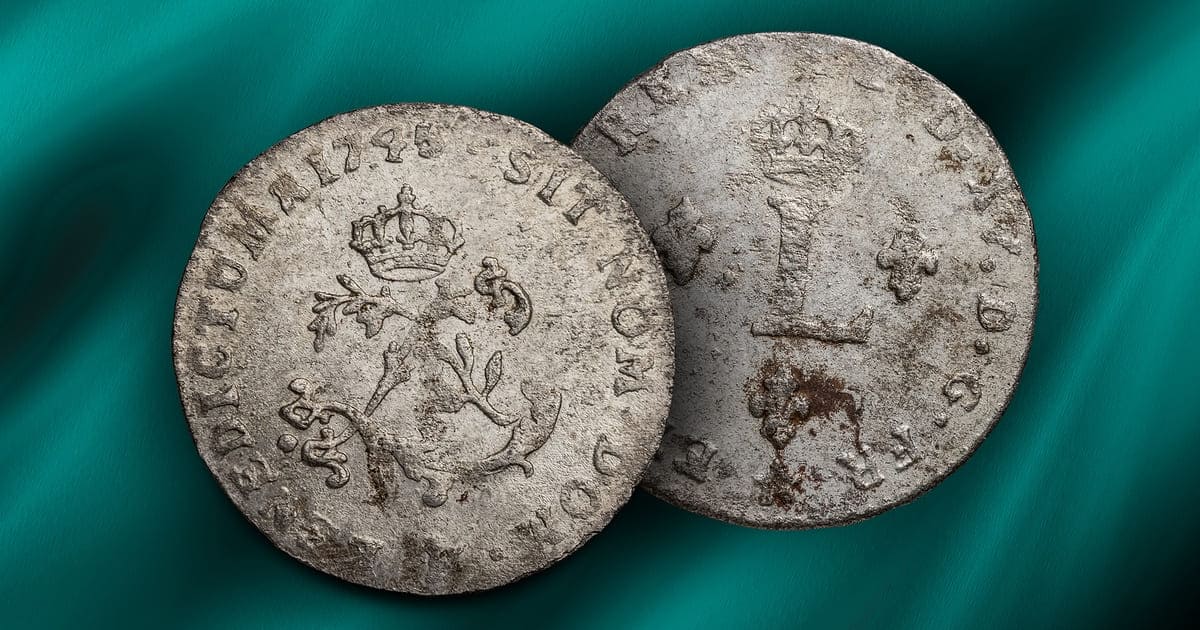
1709 – 1760 French Billon Coinage – Mixed Metal Coins
Billon coinage is a coinage made mostly of base metal, such as copper, mixed with a smaller amount of precious metal, most likely silver, but occasionally gold. Towards the end of the 17th century, the French government, mired in a deep recession, turned to striking billon coinage. King Louis XIV created France’s billon coinage by virtue of an edict in October of 1692.
The 15 Denier Billion coin was only struck at the Metz Mint in France. As a Billon coin, it was lighter in weight than comparable silver coins and therefore was discounted accordingly. The obverse displayed the Crowned Double LL, with a cross on the reverse.
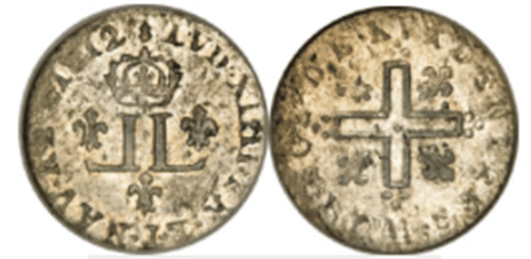
The Lyon Mint and the Metz Mint in France, both struck a 30 Denier Billon coin, also called a Mousquetaire, which was designed specifically for export to the American colonies. These coins also known as Double Sols, displayed a crowned Double L obverse with a cross on the reverse. These coins were authorized by the Royal Edicts of September 26, 1709, and June 15, 1711, and it has been suggested that more than 100 million coins were struck. The coin below has an AA Mintmark indicating the Metz Mint.
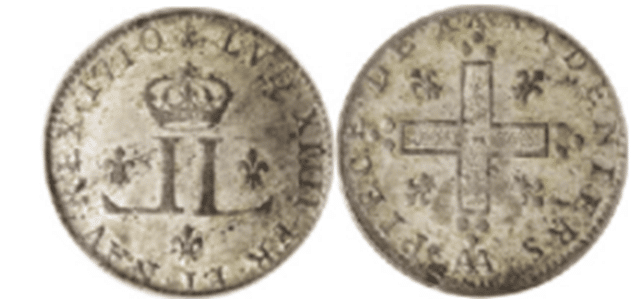
There was also a 30 Deniers Billon coin that bears a “D” mintmark. It was struck at the Lyon Mint in France. Like its Metz counterpart, these coins were also known as Double Sols. They displayed a crowned Double L obverse with a cross on the reverse. Likewise, these coins were authorized by the Royal Edicts of September 26, 1709, and June 15, 1711, and it has been suggested that more than 100 million coins were struck
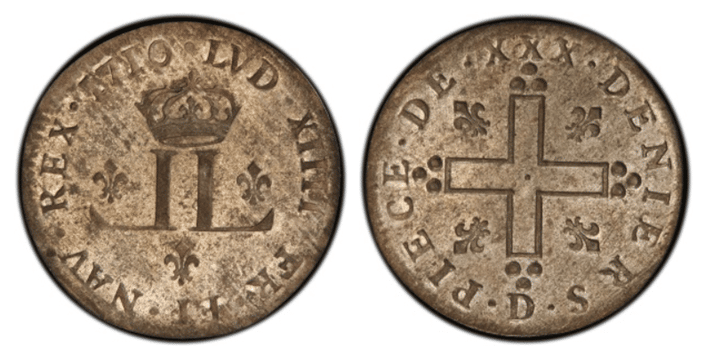
In 1738, under a Royal Edict issued by King Louis XV, all of the earlier-dated 30 Denier coins were recalled by the King. Once the majority were recalled, these 30 Denier Billon coins were devalued and replaced with 24 Denier Billon coins. No less than the 22 major French Mints melted and re-struck these coins, now with even less silver than before. To find any of these Billon coins with the majority of the original silvering still intact is highly unusual and quite rare.
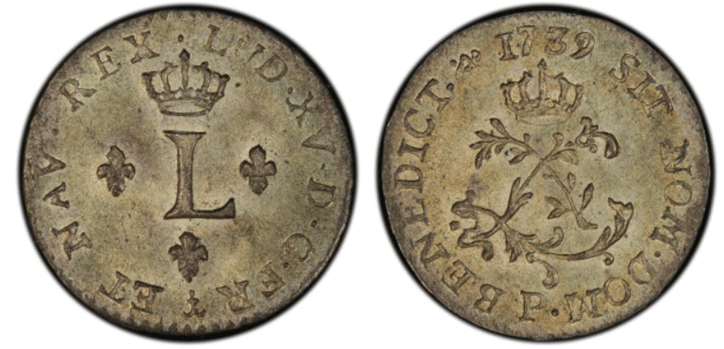
The final Billon coin issued was the Sou Marque coin which was also issued under the Royal Edict of King Louis XV. To eliminate the inadequate supply of coinage once the 30 Denier Coins were recalled, all of the French Mints struck the Sou Marque coins. Also known as “Double Sols”, these Sou Marques were struck from 1738 until 1864. It is the largest Billon coin struck by France.

| Date | Type | Mintage | VG Value | AU Value |
| 1711- 1713 | 15 Deniers | Unknown | $200 | $1,850 |
| 1709 – 1713 – AA | 30 Deniers | Unknown | $100 | $700 |
| 1709 – 1713 – D | 30 Deniers | Unknown | $100 | $700 |
| 1738 – 1748 | Half Sou Marque | Unknown | $90 | $650 |
| 1738 – 1760 | Sou Marque | Unknown | $60 | $400 |
Expand your collection today and shop our assortment of French coins and currency.




